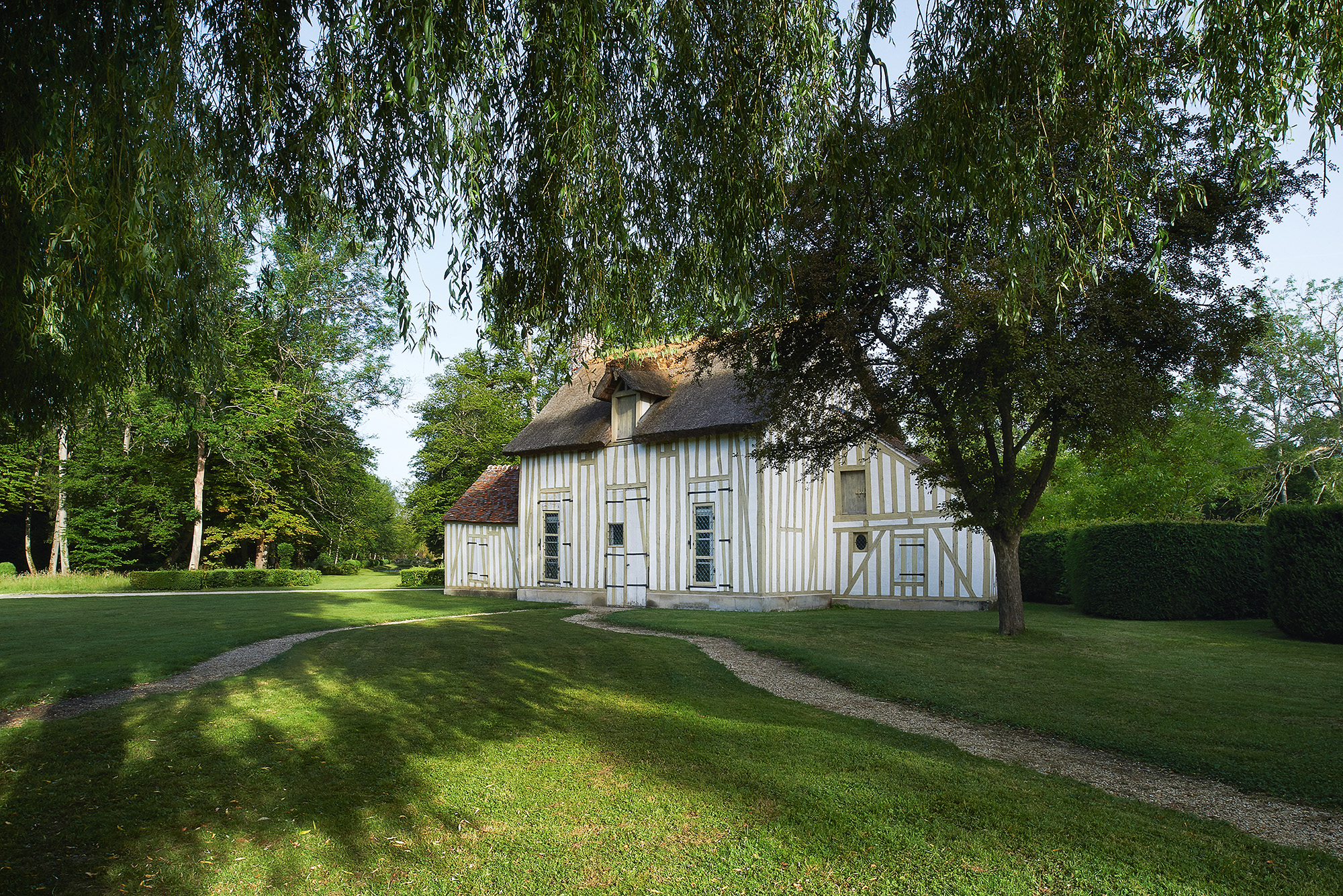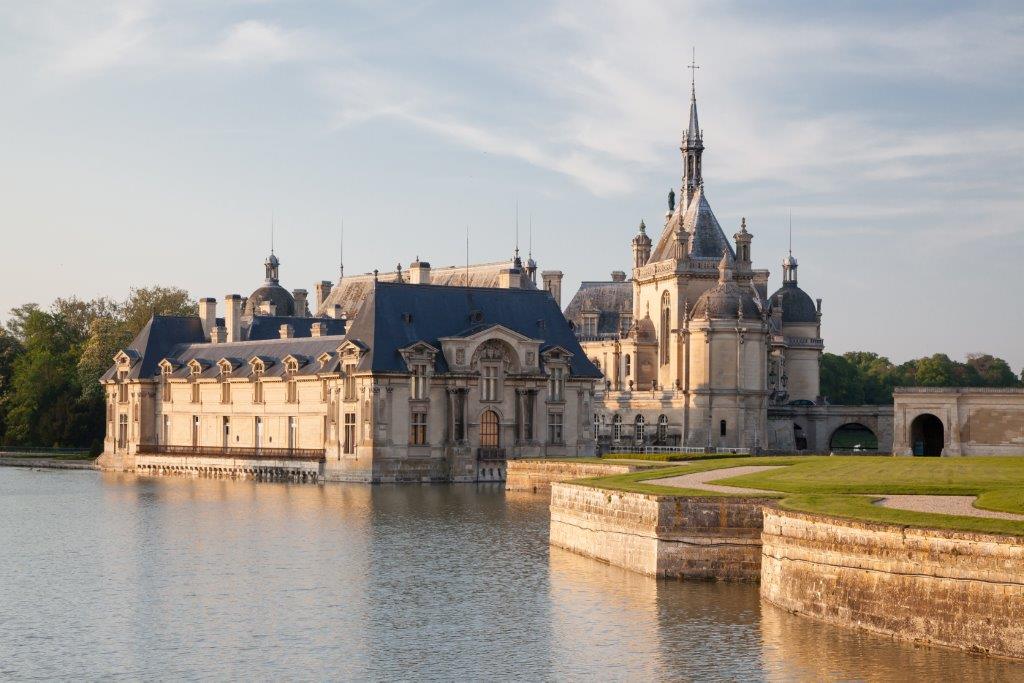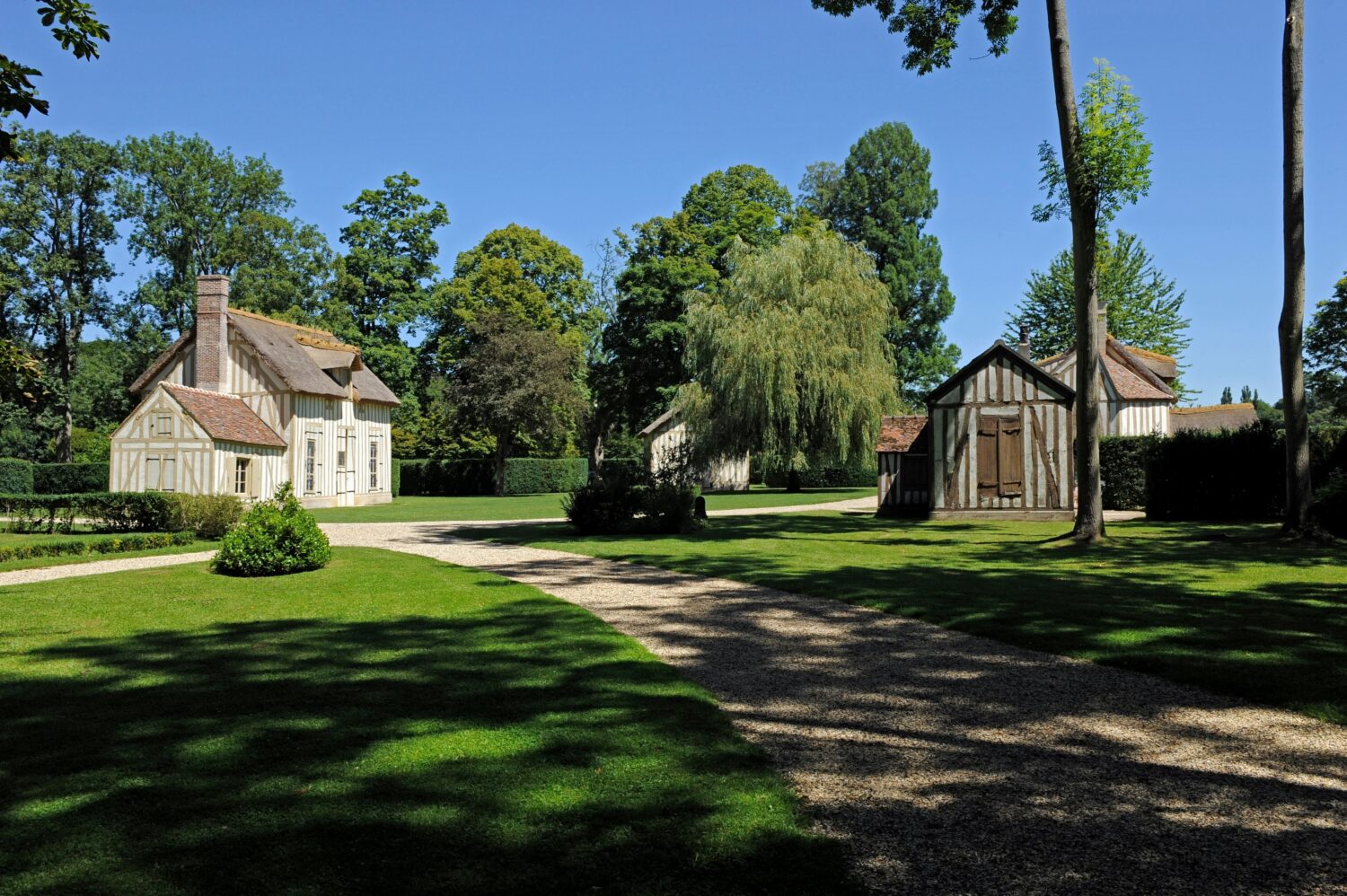The Hamlet that inspired Marie-Antoinette
Designed in 1773 by the architect Jean-François Leroy for Prince Louis-Joseph de Bourbon-Condé, the Anglo-Chinese garden houses the Hamlet, made up in 1775 of seven small houses (today five) that are rustic in appearance. It served as the model for Marie-Antoinette’s Hamlet in the Petit Trianon in Versailles.

A place of entertainment and pleasure
As soon as it was created, the Anglo-Chinese garden became one of the main attractions of the grounds. A place to retreat to after hunts and walks, for refreshments and entertainment. This tradition continues today with a traditional restaurant serving treats made using Chantilly whipped cream.
The garden originally included a number of landscaped features relating to gastronomy. Among other elements was an orchard with fruit trees, a vine growing on a mill, orange trees in the fine weather and all the houses in the hamlet were bordered by small vegetable gardens, fruit bushes and flower gardens.

A magical place
It is made up of seven small houses (today five) that are rustic in appearance, whose modest exteriors contrast sharply with their surprisingly lavish interior decor: in the Dining Room in the large central thatched cottage, there was a trompe-l’œil of forest undergrowth. This magical place inspired Marie-Antoinette’s Hamlet in the Petit Trianon.

The characteristics of the Anglo-Chinese garden
This type of garden demonstrates the penchant for China that was very much in fashion in the 18th century. Contrary to the French-style garden, the Anglo-Chinese garden sought to sublimate nature and imitate its wilderness to highlight its poetic aspect. It does feature some linear elements, but here they are intended for entertainment rather than for contemplation.
The Anglo-Chinese garden flawlessly combines planted areas and constructions. It is illustrated by dense vegetation and includes several small decorative structures.






















